This article was co-authored by Lisa Bryant, ND. Dr. Lisa Bryant is Licensed Naturopathic Physician and natural medicine expert based in Portland, Oregon. She earned a Doctorate of Naturopathic Medicine from the National College of Natural Medicine in Portland, Oregon and completed her residency in Naturopathic Family Medicine there in 2014.
There are 30 references cited in this article, which can be found at the bottom of the page.
This article has been viewed 83,645 times.
High blood pressure (hypertension) makes your heart work harder to pump blood, so it can be a dangerous condition. If left untreated, it increases your risk of heart disease, stroke, congestive heart failure, kidney disease, and other medical conditions.[1] Fortunately, you may be able to lower your blood pressure by decreasing your sodium intake, eating a healthy diet, exercising, and improving your stress management techniques. Make sure to visit your doctor regularly to monitor your condition, especially if you suspect that medication may be causing your high blood pressure or if your blood pressure remains high.
Steps
Decreasing Sodium Intake
-
1Strive to consume less than 1500 mg of sodium per day. Some days you might find it difficult to stay within this target, but, in no case, should you have more than 2300 mg of sodium a day.[2] This equates to 1 tsp (5¾ g) of table salt.
- Table salt is 40% sodium by weight which equates to about ⅔ tsp of salt.
- Try to avoid foods with more than 200 mg of sodium per serving.
- Generally, processed foods with long shelf lives have a higher sodium content than fresh or plant-based foods.
- Use a food tracker, like MyFitnessPal, to log your sodium intake.
-
2Try the DASH diet to manage your sodium intake. The Dietary Approaches to Stop Hypertension (DASH) diet was designed to help prevent or treat hypertension (high blood pressure). On this diet, aim to eat 4-5 servings of fresh fruits, 4-5 servings of fresh vegetables, 2-3 servings of low-fat dairy, 6 or fewer servings of lean meat, fish, or poultry, and 6-8 servings of whole grains each day.[3]
- Limit your intake of fats and sweets.
Advertisement -
3Use spices to season food instead of salt. If you get creative with the spices and flavourings you add into a dish, you can decrease your intake of salt and condiments that have high concentrations of sodium.[4] Some examples of low sodium alternatives include:
- Herbs: basil, bay leaf, cilantro, dill weed, parsley, sage, rosemary and thyme, tarragon, and marjoram.
- Spices: cinnamon, cloves, curry powder, ginger, mace, and nutmeg.
- Seasonings: chives, garlic, lemon, dried or chopped onions, nutritional yeast, and vinegar.
-
4Choose foods with "low sodium" labels. However, not all "low sodium" labels mean there is no sodium or low levels of it. For example, a food labeled as “reduced sodium” is not necessarily low in sodium but just has less sodium than it used to have. Here is a list of common sodium claims and their meanings:[5]
- Sodium-free or salt-free: each serving contains 5 mg of sodium at most.
- Very-low sodium: each serving contains 6 to 35 mg sodium.
- Low sodium: each serving contains 36 to 140 mg sodium.
- Light or lite in sodium: each serving contains 50% of the regular version’s sodium quantity. Some of these products might still be high in sodium.
- Reduced or less sodium: each serving contains 75% of the regular version’s sodium quantity. Some of these products might still be high in sodium.
- Unsalted or no salt added: no salt has been added during the processing of a food that normally contains salt. Some of these products might still be high in sodium.
-
5Replace high-sodium foods with lower-sodium options. You can often find lower-sodium options for certain foods that don't change the taste, texture, or the shelf life of a food. For example, canned and frozen peas can be used interchangeably in most recipes. Yet, canned peas have 3 times more sodium than frozen peas.[6]
- Generally, processed foods have more sodium than their fresh version.
- Generally, foods with long shelf lives have more sodium than their shorter-lived counterparts.
- Restaurants rarely know exactly how much sodium or salt is in a dish. Research how to make the dish yourself, or look up the sodium content of the ingredients.
-
6Find alternative snack options to your favorite salty snacks. Snacks are the enemies of most low-sodium diets, especially salty snacks. If you like snacking, try eating different flavours with less sodium or make your own, healthier versions of your favourite snack.[7]
- Incorporate fruits and vegetables as snacks. If you like to munch on crunchy snacks, try eating carrots. If you like sweet snacks, try apples or plums.
- Try healthy snacks that are bursting with flavour. For example, frozen berries are great in the summer, especially in yogurt.
- Try the non-salty version of a snack, or make it at home. For example, nuts are often available unsalted. Similarly, popcorn made from scratch without salt has a much lower sodium count than popcorn bought from a store.
-
7Cut back on sodium gradually if you’re struggling. Change is slow to happen, slower to notice, and even slower to become your default lifestyle. The key is to create achievable, realistic expectations for yourself. Go at a pace that you are confident with.[8]
- Cut out foods one at a time. If your diet is high in salt and sodium, it might take a couple of weeks to transition to a diet lower in salt and sodium, and maybe months before you are happy and used to these changes.
- Manage cravings. If you cut out too many foods too fast, or stop consuming a food your body is accustomed to, you will probably experience a craving for that food. Try to eat a healthier version of the food, but if needed, decide to eat a reasonably sized portion to satisfy your craving.
Eating Right
-
1Eat 2,300-3,400 mg of potassium each day to balance your sodium levels. Potassium counters the effects of sodium. Eat foods that contain high levels of potassium, like fruits and vegetables, or use vitamin and mineral supplements. Some examples of potassium-rich foods are:[9]
- Raisins (1/2 cup): 618 mg
- Orange juice (1 cup): 496 mg
- Bananas: 422 mg
- Spinach (2 cups): 334 mg
-
2Get more vitamin D to help lower your blood pressure. Vitamin D may help lower your blood pressure, especially in the winter when you aren't exposed to as much sun.[10] Include vitamin D by:[11]
- Getting some sun. When your bare skin is exposed to sunlight, ultraviolet B rays help your body produce vitamin D.
- Eating fish like salmon, trout, mackerel, tuna, or eel. Fish is also a great source of omega-3 fatty acids which is beneficial for your heart health.
- Eating dairy products that are fortified with vitamin D, like low-fat yogurt and milk. However, avoid cheese which is higher in fat and sodium.
-
3Increase your celery intake because it may improve blood flow. Eating 4 stalks of celery every day could help you reduce your blood pressure. Phytochemicals inside celery called phthalates can reduce blood pressure by relaxing the tissues in the walls of your arteries, which increases blood flow. So, chop up and eat 1 cup of celery for a healthy snack each day.[12]
-
4Consume less caffeine because it can worsen hypertension. Caffeine can increase blood pressure in people who rarely consume caffeine and especially in people who are already diagnosed with hypertension. Caffeine creates a big jump in the stiffness of arteries, causing the heart to pump harder which increases blood pressure.[13]
- To see if caffeine affects your blood pressure, drink a caffeinated beverage and check your blood pressure within 30 minutes. If your blood pressure has increased by 5 to 10 mmHg, then caffeine likely causes an increase in your blood pressure. Confirm this with your doctor.
-
5Drink less alcohol because it raises your blood pressure. Drinking alcohol can raise your blood pressure temporarily. Long-term heavy alcohol use can have a sustained impact on your blood pressure, so limit your alcohol intake.[14]
- Different people have different alcohol limits. Ask your doctor how much you should drink.
- Drink alcoholic drinks that are lower in sodium and salt than others.
-
6Keep a food diary so you know what you’re eating. This will make you more aware of the food you are consuming. Use an app or pen and paper to record quantities as well as what kind of foods you eat. You might be surprised by how much, or little, of one food you eat.[15]
- Write down everything you eat, how much, and when you eat.
- After you have maintained this food diary for a week or so, review your entries and see if you are happy with what food you are eating.
- If there are any meals, snacks, or food items that you think you should cut out, do so.
- Keep up the food diary and use it as a source of information about your diet.
Exercising for Good Health
-
1Create an exercise routine with the help of your doctor. Devise an exercise regimen that fits into your lifestyle, schedule, and blood pressure concerns. It is important that you create a realistic exercise plan, because your blood pressure will likely rise again if you stop exercising.[16]
- Your doctor will be able to give you a target weight and size for your body which can then be a goal to work towards. A body carrying extra weight puts extra strain on your heart and blood vessels, so losing weight often helps you maintain and control your blood pressure.[17]
- Don’t quit. If it helps, think of your exercise like a prescription: The doctor ordered that you walk for X minutes just like the doctor might order you to take a pill.
- Be honest about your schedule, lifestyle, and motivations. Do you really have time to walk 40 minutes? Can you afford to subscribe to a gym membership? If not, there are many other ways to get active for free and that use little time and space. Ask if your doctor knows what other patients have found successful.
-
2Do your daily chores each day to increase your activity level. You might not realize it, but doing your daily activities and moving around the house are significant ways to stay active.[18] Most household chores are can be physically vigorous like:
- Doing the laundry. Carrying weighty baskets of clothes and walking around and standing up lightly exercises your body.
- Sweeping and mopping. You walk around while pushing a weight with your arms.
- Doing garden or yard work. Depending on the activity, you might be planting, raking the leaves, collecting branches, or pulling out stubborn weeds.
- Washing the car. Washing your car takes arm strength and endurance.
- Moving furniture. A room in your home might need a mini-makeover or you might need to clean the floor underneath the couch. However, be careful moving heavy objects and avoid harming your body.
- Doing the dishes by hand. Washing dishes while standing up doesn’t burn a lot of calories, but it can keep the extra weight off. Even loading and unloading the dishwasher counts as exercise.
-
3Do fun activities with others. Exercise can be fun and rewarding if you incorporate it with fun activities that you can do with your friends, family, or in groups.[19]
- Look into joining an exercise, fitness, or sports groups. For example, you can often find boot camps, yoga classes, or walkers and joggers who routinely meet at parks. There, you can meet new people with similar goals to motivate you to be active.
- Find a fitness buddy. Most people find they stick to their exercise schedule more closely when they have a partner or buddy who is also trying to exercise. You can try to find someone who wants to run at around the same time and pace.
-
4Use your feet to go from place to place. When possible, try to walk, run, or bike to certain places instead of driving, taking the escalator, or riding an elevator. [20]
- One simple difference like taking the stairs instead of the elevator every day at work can help keep your weight in check.
-
5Get creative when getting your daily exercise. There are infinite ways to exercise beyond walking and running. Take a dance or aerobics class, join a local or company team for a sport, or start doing yoga and pilates at home. If you haven’t found the right regimen and schedule yet, look around online or at your local community for activities to do and ask your friends and family for suggestions. You will eventually find the right kind of exercise, but it might take some time to decide what you like most.[21]
- For example, you can use the playground as a gym instead of going to a fitness gym. You can exercise by walking up slides, hanging onto monkey bars, or climbing onto platforms. However, make sure you aren't disrupting children from playing on the playground. Use the park in the early mornings, during the school day, or late at night when children are least likely to be at the park.
Managing Stress
-
1Get support to help you deal with stress. Changing your lifestyle is difficult and takes a long time, so trying to lower your blood pressure can cause stress. However, stress also raises blood pressure, so it is important to reach out for support and help when needed. Having support from your family, friends, workplace, and living space can help you manage stress and your blood pressure.[22]
- Ask your friends and family for support. You need the help of others around you to succeed. Eating healthy and working out can become fun social activities and having someone supportive encourage you or do it with you can help reduce stress. It can also help strengthen your relationship with whoever you choose to share this lifestyle change with.
- Join a support group. Many support groups put fellow blood pressure patients in contact with one another. Ask your doctor or nurse if there is a group around you.
- Get professional help. Health, social, and lifestyle changes can be very difficult at times. Contact a psychologist or therapist near you if applicable.
-
2Practice gratitude to help you feel better. Expressions of gratitude can help lower levels of stress. Many believe that there is a relationship between focusing on what you are thankful for, and having less stress in life.[23]
- Think of 3 things you are grateful for every day. You can do this before going to sleep, at dinner, or halfway through the day. You can do this out loud and with others, or only in your head to yourself.
- Say thank you to people. After someone has done something nice for you, telling them that you appreciate them can not only make others feel good but can make you feel good as well.
- Tell your loved ones why you love them. Showing people that you care and are grateful for them can make you less stressed. In addition, your loved ones are more likely to respond positively, and your relationship will be less stressful.
-
3Know what triggers your stress. For many people, there are certain things that happen that cause stress. Some people find it helpful to recognize in advance what events, things, or people cause them stress (called a “stress trigger”) and remove themselves from the situation.[24]
- Create a list of times when you get stressed, or what stresses you out.
- Identify repeating or important factors: “my mother-in-law” or “when it’s 10pm and I still have the dishes to do.”
- Decide how you want to handle these situations to avoid getting stressed. Often, people find it helpful to think of a reason or way to excuse themselves or ways to communicate with others about their stress in a situation.
- Try to recognize when stressful events will happen such as looking for warning signs. You want to get good enough that you can anticipate your stress, and take action to avoid getting stressed. For example, if you become stressed when you still have dishes to do late at night, you can avoid your stress trigger by choosing to do the dishes right when you get home. Alternatively, you can ask someone else living with you to do the dishes earlier.
-
4Make time to relax. It is easy to try to do too many things and overwork yourself. If you do not take time explicitly just to relax, you might increase your stress level. Make sure you unwind during the day to handle your stress and blood pressure.[25]
- Do something calming that you enjoy. This might include reading, watching TV, yoga, window-shopping, walking, or doing a crossword.
- Do nothing. Some people consider meditation and focused breathing to be incredibly relaxing. Some also say meditation helps with control over their emotions and thoughts.[26]
-
5Be with people you like. Your social life is incredibly important to your happiness and health. Spend time around people you enjoy to have a good time and destress. Regardless of the activity, spending time with friends can help you relax.[27]
- Being alone or stuck in one environment can close your perspective about many things. Opening yourself up to new activities and spending time outside of where you are normally can give you a new outlook on life and lower you stress.
-
6Avoid cigarette smoking because it spikes your blood pressure. Smoking a cigarette will increase your blood pressure for a few minutes, and smoking is also very bad for your health overall. If you smoke cigarettes, your body will be less equipped in general to maintain health, as well as experiencing spikes in your blood pressure. Many people smoke cigarettes to handle stress, so it is important to find an alternative stress reliever.[28]
- Cigarette smoking can lead to health complications that will also cause you stress and limit your lifestyle.
- Cigarettes are expensive, and heavily taxed in some areas. They can cause financial stress to some people with tight budgets.
- In some cultures and cities, there is a social stigma against cigarette smoking. Experiencing pushback for smoking from your friends or coworkers can cause you stress.
Sticking with Your Lifestyle Change
-
1Make achievable goals. Creating difficult goals and failing to reach them can make you feel discouraged. By speaking to your doctor or health care professional, you can come up with a doable plan and stick to it. If your needs change over time, adjust your plan accordingly.[29]
- A common mistake of people who embark on changing their lifestyle or habits is expecting too much, too fast, and then becoming discouraged when their expectations are not met. Think realistically about what changes you can make, and in what time frame. Use numbers to calculate calories, sodium intake, hours of exercise or rest, and so on when possible.
-
2Find someone who will make changes alongside with you. Eating is an inherently social thing, and light exercise can be a great socializing activity. Ask your family and friends to make some lifestyle changes with you to make your transition seem more feasible.[30]
- Even if family and friends do not want to eat the same food or exercise the same amount as you, they can still support your decisions and help encourage you to go to the gym, or to eat certain meals.
- Start first with the changes that are easiest for everyone. For example, adding fresh fruits to everyone's diet is easier than eliminating a certain food altogether. Or start with light walks around the neighbourhood before asking friends or family to go on marathons or to the gym.
- Ask people you trust and are comfortable with for support. It can make changing your lifestyle less stressful if the people who support you are positive, encouraging, and non-judgemental.
-
3Be accountable. In order for lifestyle changes to stick, you must hold yourself accountable. One way you can do this is to tell a friend what goals you will be working toward and ask them to make sure you complete them. For some, just telling someone you're planning to achieve something is a good enough contingency plan. By telling someone what your goals are, you are making yourself accountable to that person. You don't want to disappoint them by not completing your goals and you want to make them proud by working hard to achieve them.[31]
- You could also give yourself negative consequences for not completing your goals. For example, if you smoke regularly, you can tell yourself that for every cigarette you smoke, you have to put money in a jar and donate that money to a charity or an organization that helps smokers quit. Or you could say to yourself, "I’m working on having a healthier diet. If I cheat and have unhealthy snacks after dinner, I have to increase my exercise the next day.”
-
4Have faith in your hard work. Permanent behavioural change is difficult to implement, and will not happen in a day, week, or even for months. There will be days when you don’t want to eat healthily, or when you don't exercise. The important thing is to remember that every little bit counts. Hard work and an honest relationship with your body will pay off in the future, even if it doesn’t seem like it at the moment.[32]
- Remind yourself of your goals and motivations.
- Ask friends and family to help you reinforce your rules and goals even when you are unmotivated.
- At the beginning, write a list of the reasons why you are doing this, or goals you hope to achieve. Reread this list when you start to feel unmotivated.
When to Seek Medical Care
-
1See your doctor to get your blood pressure checked as directed. After you’ve been diagnosed with high blood pressure, you’ll need to monitor your blood pressure readings. Visit your doctor regularly to make sure you’re making good progress. Ask your doctor how often you need to get checked.[33]
- Between doctor’s visits, you can check your blood pressure at a local drugstore or using a home blood pressure kit.
- Your doctor can make sure your lifestyle and dietary changes are working.
-
2Consult your doctor if medication may be causing your hypertension. Some medications can cause high blood pressure. If your medication is causing hypertension, your doctor may be able to change your medication or help you manage this side effect. Talk to your doctor to find out if your medication is an issue and what you can do to improve your health.[34]
- For example, birth control pills, pain medications, certain antidepressants, and over-the-counter cold medications can raise your blood pressure.
-
3Work with your doctor to create a treatment plan for you. Talk to your doctor about what’s causing your hypertension and what you need to change. They’ll likely recommend you start with diet and lifestyle changes. Then, they’ll help you monitor your condition to make sure you’re recovering.[35]
- You may need to revise your treatment plan over time.
-
4Ask about medication if your blood pressure remains high. You may be able to manage your blood pressure by sticking to your diet and lifestyle changes. However, this isn’t always possible. You may need to take medication to lower your blood pressure. Ask your doctor about your treatment options.[36]
- There are several different treatments for high blood pressure, depending on your needs. Your doctor will explain each treatment option to you and help you decide which one is right for you.
Expert Q&A
-
QuestionHow do you get a free BP monitor?
 Lisa Bryant, NDDr. Lisa Bryant is Licensed Naturopathic Physician and natural medicine expert based in Portland, Oregon. She earned a Doctorate of Naturopathic Medicine from the National College of Natural Medicine in Portland, Oregon and completed her residency in Naturopathic Family Medicine there in 2014.
Lisa Bryant, NDDr. Lisa Bryant is Licensed Naturopathic Physician and natural medicine expert based in Portland, Oregon. She earned a Doctorate of Naturopathic Medicine from the National College of Natural Medicine in Portland, Oregon and completed her residency in Naturopathic Family Medicine there in 2014.
Licensed Naturopathic Physician You can check with your insurance to see if this type of equipment is covered. It's a type of "durable medical equipment," and some insurance companies reimburse for these. Another option is to use a blood pressure machine at a pharmacy or grocery store. Many pharmacies will have a free machine to use.
You can check with your insurance to see if this type of equipment is covered. It's a type of "durable medical equipment," and some insurance companies reimburse for these. Another option is to use a blood pressure machine at a pharmacy or grocery store. Many pharmacies will have a free machine to use.
Warnings
- Stay hydrated and drink enough water.⧼thumbs_response⧽
- Your blood pressure might not decrease enough through natural methods only. Consult your doctor to ask if medication is necessary.⧼thumbs_response⧽
- If you feel woozy, lightheaded, or dizzy, contact emergency services or your primary care physician.⧼thumbs_response⧽
References
- ↑ http://www.nhlbi.nih.gov/health/health-topics/topics/hbp/
- ↑ http://www.heart.org/HEARTORG/Conditions/HighBloodPressure/PreventionTreatmentofHighBloodPressure/Shaking-the-Salt-Habit_UCM_303241_Article.jsp
- ↑ https://dashdiet.org
- ↑ https://www.nhlbi.nih.gov/health/educational/healthdisp/pdf/tipsheets/Use-Herbs-and-Spices-Instead-of-Salt.pdf
- ↑ https://www.chattanoogaheart.com/2018/03/05/blog-how-to-reduce-salt-in-our-diet/
- ↑ https://www.chattanoogaheart.com/2018/03/05/blog-how-to-reduce-salt-in-our-diet/
- ↑ https://www.chattanoogaheart.com/2018/03/05/blog-how-to-reduce-salt-in-our-diet/
- ↑ https://www.heartfoundation.org.nz/about-us/news/blogs/salt-in-everyday-foods
- ↑ https://ods.od.nih.gov/factsheets/Potassium-HealthProfessional/
- ↑ https://www.sciencedaily.com/releases/2012/04/120425094310.htm
- ↑ https://www.health.harvard.edu/staying-healthy/vitamin-d-and-your-health-breaking-old-rules-raising-new-hopes
- ↑ https://health.clevelandclinic.org/celery-may-help-bring-your-high-blood-pressure-down/
- ↑ https://www.ahajournals.org/doi/full/10.1161/01.HYP.36.1.137
- ↑ https://www2.hse.ie/wellbeing/alcohol/physical-health/alcohols-effect-on-the-body/blood-pressure-and-the-heart.html
- ↑ https://www.nhlbi.nih.gov/files/docs/public/heart/hbp_low.pdf
- ↑ https://www.mayoclinic.org/diseases-conditions/high-blood-pressure/in-depth/high-blood-pressure/art-20045206
- ↑ http://www.nhlbi.nih.gov/files/docs/public/heart/hbp_low.pdf
- ↑ https://www.mayoclinic.org/diseases-conditions/high-blood-pressure/in-depth/high-blood-pressure/art-20045206
- ↑ https://www.betterhealth.vic.gov.au/health/healthyliving/Exercise-with-a-friend
- ↑ https://www.nhs.uk/live-well/exercise/walking-for-health/
- ↑ https://www.health.qld.gov.au/news-events/news/30-ways-to-get-active-exercise-fun
- ↑ https://www.helpguide.org/articles/stress/stress-management.htm
- ↑ https://greatergood.berkeley.edu/article/item/four_ways_gratitude_helps_you_with_difficult_feelings
- ↑ https://www.helpguide.org/articles/stress/stress-management.htm
- ↑ https://www.heart.org/en/healthy-living/healthy-lifestyle/stress-management/3-tips-to-manage-stress
- ↑ https://www.npr.org/2008/08/21/93796200/to-lower-blood-pressure-open-up-and-say-om
- ↑ https://www.helpguide.org/articles/stress/stress-management.htm
- ↑ https://www.ncbi.nlm.nih.gov/pubmed/20550499
- ↑ https://www.psychologytoday.com/us/blog/science-choice/201704/7-tips-setting-achievable-goals
- ↑ https://www.health.harvard.edu/blog/intensive-lifestyle-change-it-works-and-its-more-than-diet-and-exercise-2017082112287
- ↑ https://www.apa.org/helpcenter/lifestyle-changes
- ↑ https://www.ncbi.nlm.nih.gov/pmc/articles/PMC6466216/
- ↑ https://www.cdc.gov/bloodpressure/measure.htm
- ↑ https://medlineplus.gov/highbloodpressure.html
- ↑ https://www.mayoclinic.org/diseases-conditions/high-blood-pressure/diagnosis-treatment/drc-20373417
- ↑ https://www.mayoclinic.org/diseases-conditions/high-blood-pressure/diagnosis-treatment/drc-20373417
About This Article
To reduce your blood pressure naturally, try to limit your sodium intake by avoiding processed foods, since too much sodium contributes to high blood pressure. For example, you can season your food with herbs and spices instead of salt, and eat fresh vegetables instead of canned. Also, try to exercise for around an hour 5 times a week to help control your blood pressure and relieve stress. Even just listening to calm music or spending 30 minutes on your favorite hobby can help lower your blood pressure. For tips on how to stick with healthy lifestyle changes to lower your blood pressure, read on!
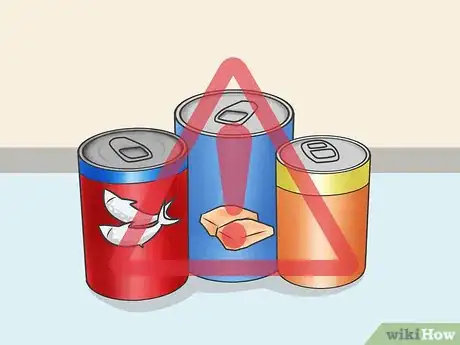

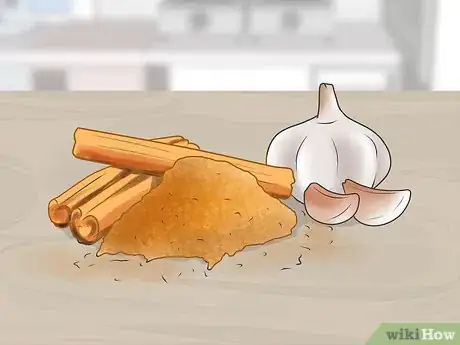
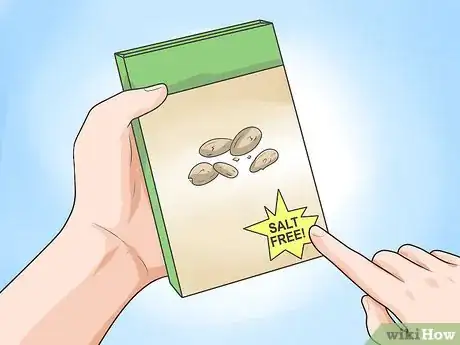
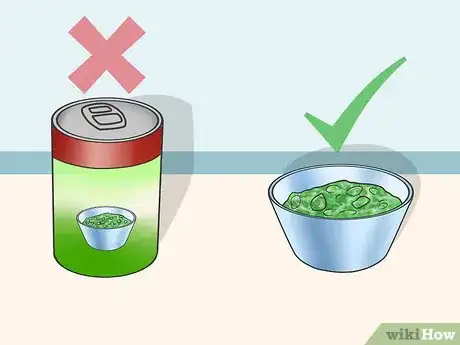

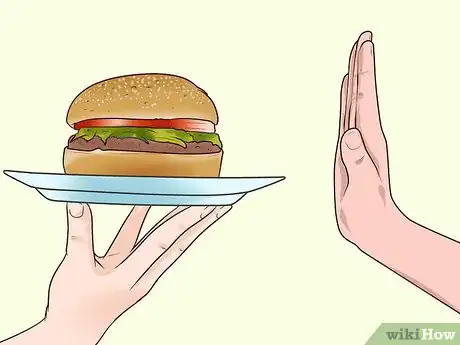


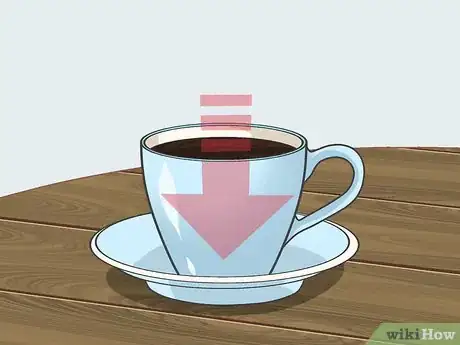
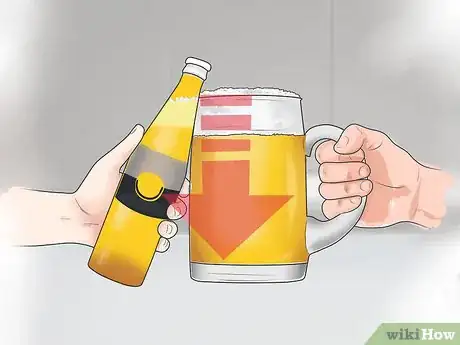

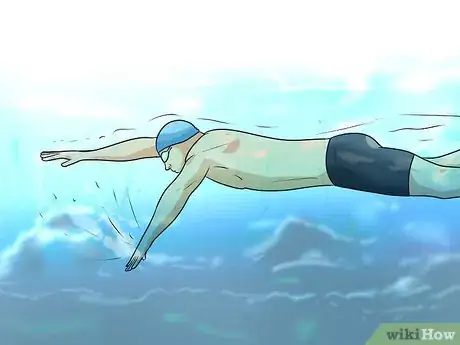

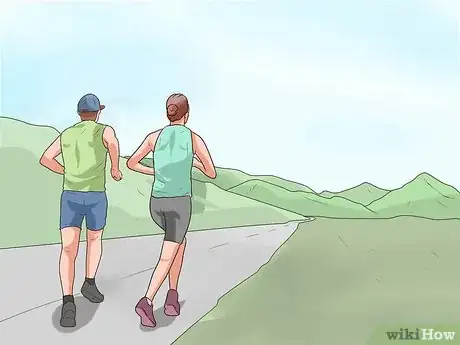
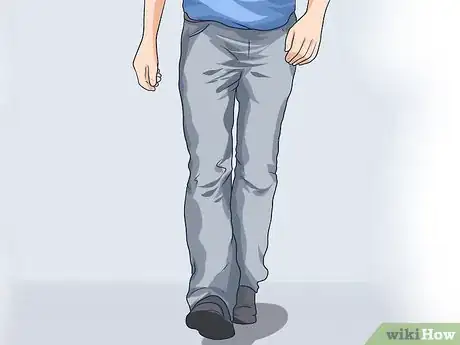
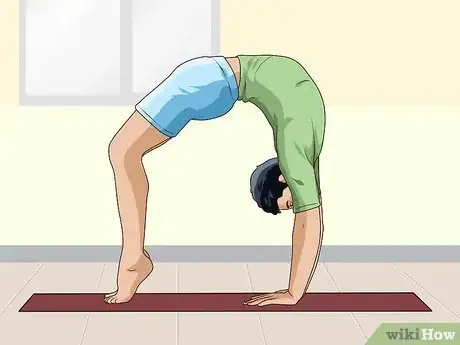
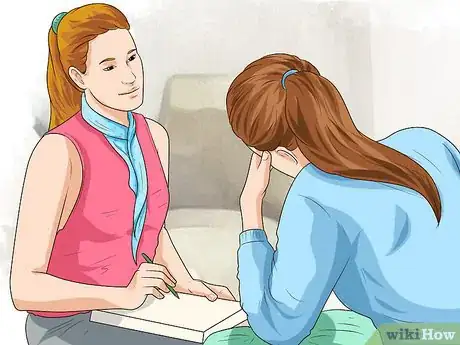
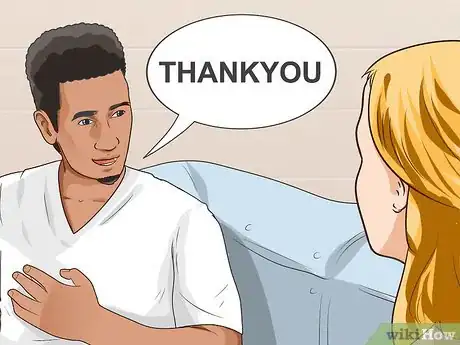

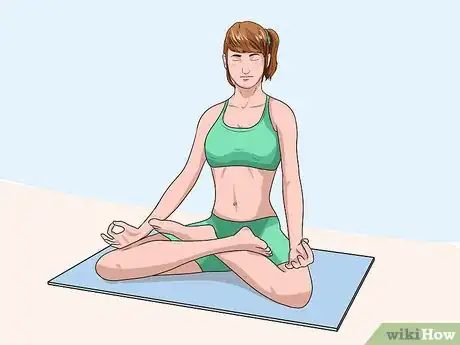
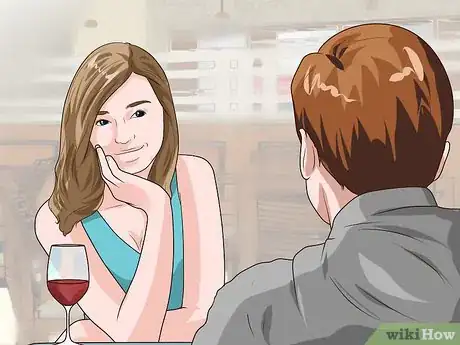

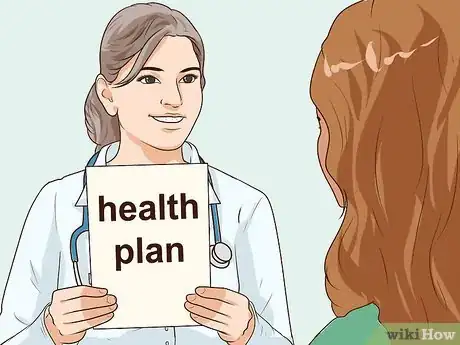
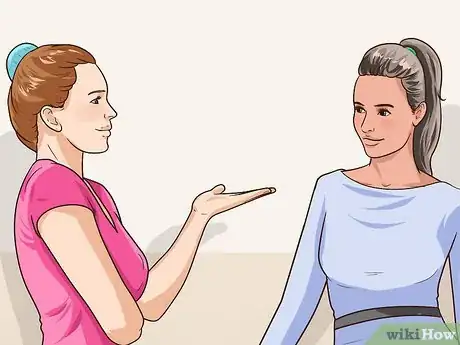






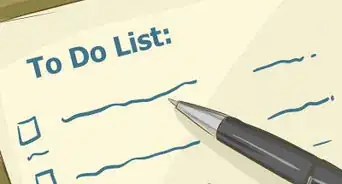
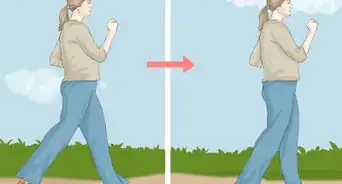
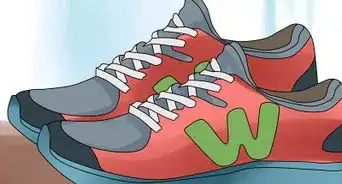






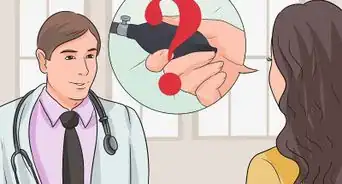










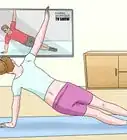



































Medical Disclaimer
The content of this article is not intended to be a substitute for professional medical advice, examination, diagnosis, or treatment. You should always contact your doctor or other qualified healthcare professional before starting, changing, or stopping any kind of health treatment.
Read More...